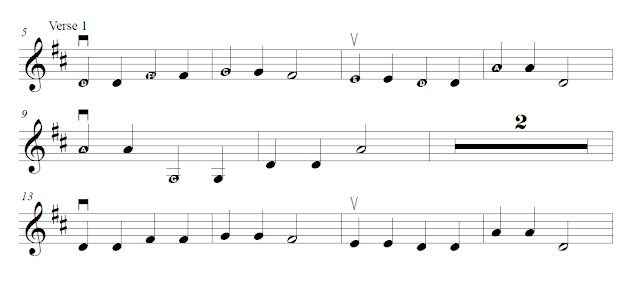Students at my schools have one 30-minute small group and one 30-minute full orchestra rehearsal each week, and I like to send a weekly newsletter to families to keep everyone up-to-date. I include a summary of what we did that week, the practice assignment, the link to the small group schedule, and any concert info/reminders of important dates.
I used to just write an email each week (with lots of copy/pasting from the previous year's weekly email), but it was only text. At some point I switched to Google Slides, and I like this format much better. Each week fits on one slide, and I can include buttons with links to the schedule, concerts in the area, music advocacy resources, and more. It's easy to add pictures and text boxes and to move things around to make it look just the way I want. (For any students who are flagged "No media release" on Infinite Campus, I do check in with those families to see if it's okay that I include pictures of their student in the newsletter and that has not been a problem.) Families really like seeing pictures of their students in the newsletter, and I'm hoping that including more pictures makes it more likely for families to read the other information that I include as well :) The document is set to "Anyone with the link can view," and then I include the link in the weekly email to families.
Instead of starting from scratch each week, I have a tab open with the previous year's newsletter and simply copy/paste the corresponding slide into the top of this year's document and update as needed. Now the weekly newsletters are all contained in one document, and it's easy to scroll down to previous weeks. I change the background color each week, so you see a nice rainbow effect as you scroll through the school year. Any extra slides with concert info or Solo/Ensemble info etc. have a white background so they stand out.
My weekly email is basically:
Happy Tuesday orchestra families!
Please check out our weekly orchestra newsletter to find out what we did in orchestra this week!
(I highlight "weekly orchestra newsletter," hit "Control K," and then copy/paste the newsletter link to turn the text into a link.)
I'll also include concert into or other important info in the body of the email for those who don't click on the link. I cc my administrators and bcc parent/guardian emails and then "schedule send" the email for the end of the school day.
Here are templates of an entire school year's worth of slides. Feel free to make a copy and modify as you like!
Weekly newsletter template
Notes: Along the top where it says the week number, I also include the school and grade level, since I teach at multiple schools and want to keep it organized for myself. I've also removed all the links but kept the text blue to see where I would generally include one.







































.png)
.png)
.png)
